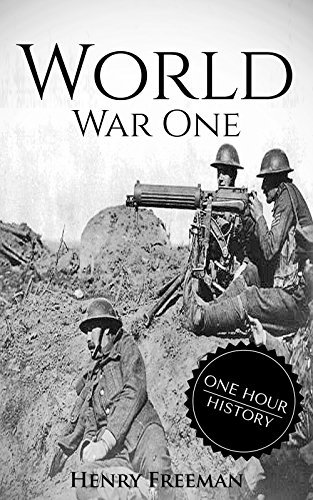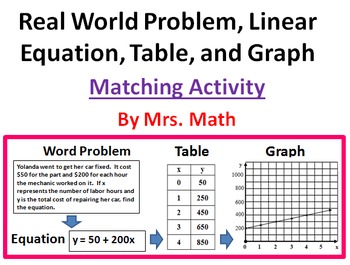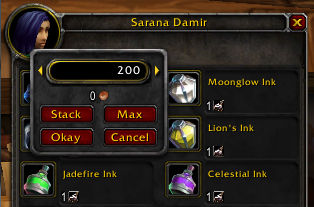An In Depth History Of World War 1
World War I, also known as the First World War, was a global conflict that lasted from 1914 to 1918. It was the largest and most destructive war in history, causing millions of casualties and the fall of four major empires. The war was fought between the Allies (Britain, France, Russia, and the United States) and the Central Powers (Germany, Austria-Hungary, the Ottoman Empire, and Bulgaria). The causes of the war are still debated today, but some of the main factors include the rise of nationalism in Europe, a complex system of alliances, and an arms race between the major powers. This in-depth history of World War I will explore the events leading up to the conflict, the major battles, and its long-term consequences.
Causes of WWI
World War I, also known as the Great War, was a global conflict that lasted from 1914 to 1918. It began as a dispute between the countries of Austria-Hungary and Serbia, but quickly escalated into a world war of unprecedented scale and destruction. The causes of WWI were multifaceted and complex, with a number of contributing factors including long-term military and economic rivalries, a complex network of alliances, and the assassination of Archduke Franz Ferdinand of Austria.
Military rivalries were a major factor leading to the outbreak of WWI. In the years before the war, a number of European nations had built up large and powerful militaries, and these nations were often in competition with one another. This competition for military might led to an arms race, and nations began to stockpile weapons and develop new technologies for warfare.
Another cause of WWI was the complex network of alliances that had been created in Europe in the decades before the war. This network of alliances created a web of interdependencies, meaning that if one nation went to war, it was likely that other nations would have to join in.
Finally, the assassination of Archduke Franz Ferdinand in 1914 was a major factor in the outbreak of WWI. This assassination sparked a conflict between Austria-Hungary and Serbia, and the web of alliances meant that other nations had to join in. This conflict quickly spread, and soon the entire world was at war.
Combatants Involved
World War 1 (WW1) was a global war that began on July 28th, 1914 and lasted until November 11th, 1918. It pitted the Allied Powers of Great Britain, France, Russia, Italy, and the United States against the Central Powers of Germany, Austria-Hungary, Bulgaria, and the Ottoman Empire. All sides put forth a tremendous effort in order to achieve victory, as the war quickly became one of the most destructive events in history. In addition to the millions of fatalities, WW1 also brought about a massive shift in the world order.
The war was primarily fought in Europe, with battles taking place in the trenches of France and Belgium. It was also fought in the air and on the seas, with new technologies such as submarines, machine guns, and airplanes playing a major role in the conflict. Each side put forth tremendous efforts to gain an advantage, but in the end it was the Allies who emerged victorious.
In total, more than 70 million military personnel were involved in WW1. This included troops from more than 30 countries, including the United States, which joined the Allies in 1917. The Central Powers were outnumbered and ultimately defeated. The end of the war marked a new era in world history, and it is important to understand the combatants involved in order to fully appreciate the magnitude of WW1.
Major Battles and Campaigns
World War 1 was one of the most destructive conflicts in history, and it is important to understand the major battles and campaigns that occurred over the course of the war. During WW1, the Allies and Central Powers had to contend with a vast array of weapons and tactics, as well as the ever-changing landscape of the battlefield.
The first major battle of the war was the Battle of the Somme in July 1916, which saw the Allies launch a major offensive against the Germans in northern France. Over the course of four months, the Allies and Germans fought in a brutal conflict that resulted in hundreds of thousands of casualties.
In April 1917, the Allies launched the Nivelle Offensive, an offensive against the Germans in northern France that resulted in heavy losses for both sides. The offensive was unsuccessful, and the Allies eventually had to retreat.
The Battle of Passchendaele was one of the bloodiest battles of WW1, and it resulted in the death of hundreds of thousands of soldiers. The battle was fought between the Allies and Germans in Belgium in July 1917, and it resulted in a victory for the Allies.
The Battle of Verdun was a major conflict between the Allies and Central Powers in France that lasted from February to December 1916. The battle was one of the longest and most destructive of WW1, and it resulted in over 500,000 casualties on both sides.
The Battle of Amiens was the last major offensive of WW1, and it resulted in a decisive victory for the Allies. The battle was fought in August 1918 and was the beginning of the end of the war.
These battles and campaigns were some of the most important of WW1, and they had a major impact on the course of the war. Understanding the events of WW1 is essential in order to understand the history of the conflict and its impact on the world.

The Home Front
World War I was a global conflict that affected all aspects of life, including the home front. During WWI, many countries experienced a period of civil unrest, economic turmoil, and political upheaval. In the United Kingdom, the government began implementing various policies to protect and support the home front. These policies included rationing, the introduction of conscription, and the creation of the Women’s Land Army.
Rationing was a major part of life for the people of the United Kingdom during the war. This was done in order to ensure that all citizens would have access to basic food and supplies. The government also introduced conscription, which allowed them to draft men into the army. This allowed for a greater level of military support, but also caused unrest among many citizens who did not want to fight.
The Women’s Land Army was created during WWI as a way to fill the gap left by men who had been drafted into the army. This organization allowed women to take on the traditionally male-dominated roles of agricultural work. This organization was seen as a major success, as it allowed for the continuation of food production despite a lack of male labor.
Overall, the home front of WWI was an integral part of the war effort. Through rationing, conscription, and the Women’s Land Army, the government was able to ensure the safety and support of their citizens. These efforts helped to sustain the country and were essential to the victory of the Allies.
The Aftermath
World War I left a lasting impact on the world, and the consequences of the conflict are still felt today. After four long years of conflict, the war finally ended with the signing of the Treaty of Versailles in June 1919. The treaty, which was signed by Germany and the Allied Powers, brought an end to the war and was meant to ensure a lasting peace between the countries involved. The treaty imposed significant restrictions on Germany, such as the loss of territories, the dissolution of its military, and the payment of reparations. The harsh terms of the Treaty of Versailles led to resentment in Germany and laid the groundwork for World War II. In addition to the political consequences, World War I had a major economic impact on the participating countries. The war caused a significant drop in trade, as well as a decrease in industrial production and agricultural production. This resulted in high unemployment and rising inflation in many countries. The war also left a legacy of destruction, with millions of people displaced and countless lives lost. To this day, the legacy of World War I lives on in the collective memory of those who lived through it.
Legacies of WWI
World War I left behind a legacy of destruction and death that still resonates today. The war resulted in the deaths of over 16 million people, the displacement of millions of civilians, and the carnage of the battlefields that remain as reminders of the horrors of the war. The losses of WWI changed the way nations interacted and led to a decline in the power of empires, the rise of new nations, and the emergence of new types of warfare. WWI also left a lasting impact on the political, economic, and social structures of the world, with the formation of new alliances, the creation of new weapons, and the introduction of new forms of technology. The legacies of WWI are still felt in many aspects of global history, and its impact on the world is still widely debated today.
FAQs About the An In Depth History Of World War 1
Q: When did World War 1 begin?
A: World War 1 began on July 28, 1914 and lasted until November 11, 1918.
Q: What countries were involved in World War 1?
A: World War 1 involved many countries, including the Allied Powers (Great Britain, France, Russia, Italy, Japan, and the United States) and the Central Powers (Germany, Austria-Hungary, Bulgaria, and the Ottoman Empire).
Q: Who won World War 1?
A: The Allied Powers won World War 1 and the Central Powers were forced to sign the Treaty of Versailles on June 28, 1919, officially ending the war.
Conclusion
In conclusion, World War I was a devastating and bloody conflict that consumed millions of lives and left an indelible mark on the world. It was the first major war of the 20th century, and its consequences—political, economic, and social—were felt around the globe. The war began with the assassination of Archduke Franz Ferdinand in 1914 and ended with the signing of the Treaty of Versailles in 1919. Along the way, the war saw the introduction of new technology, tactics, and strategies of warfare, and made a lasting impact on the world.





